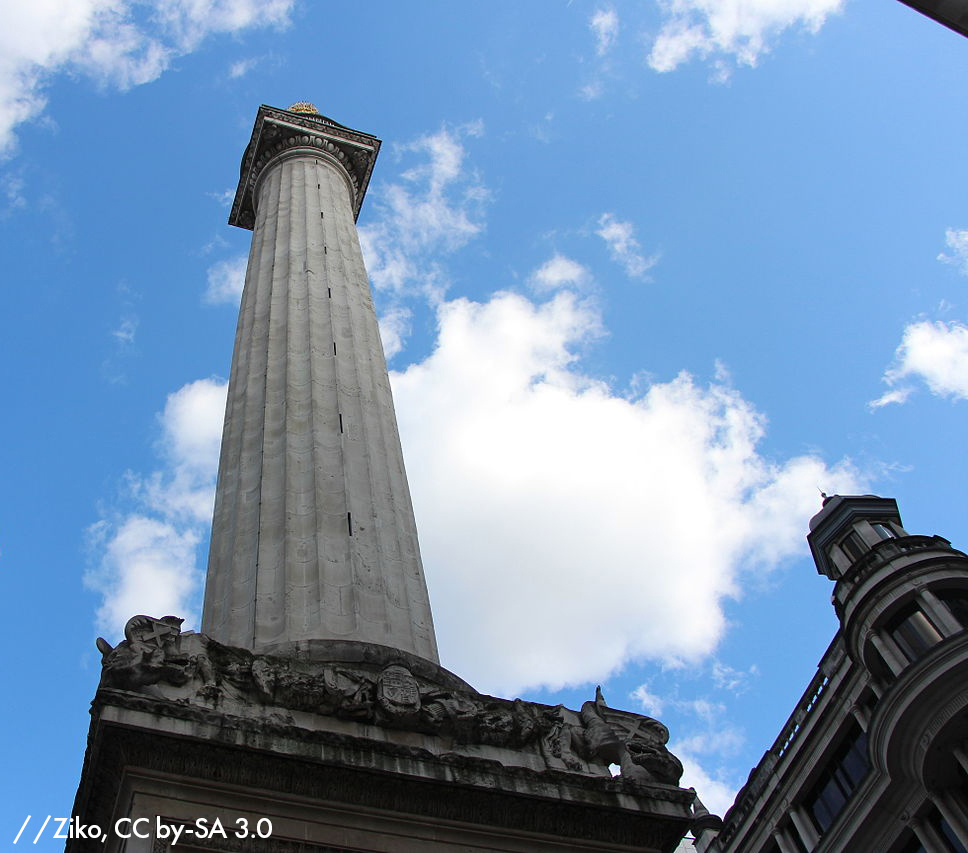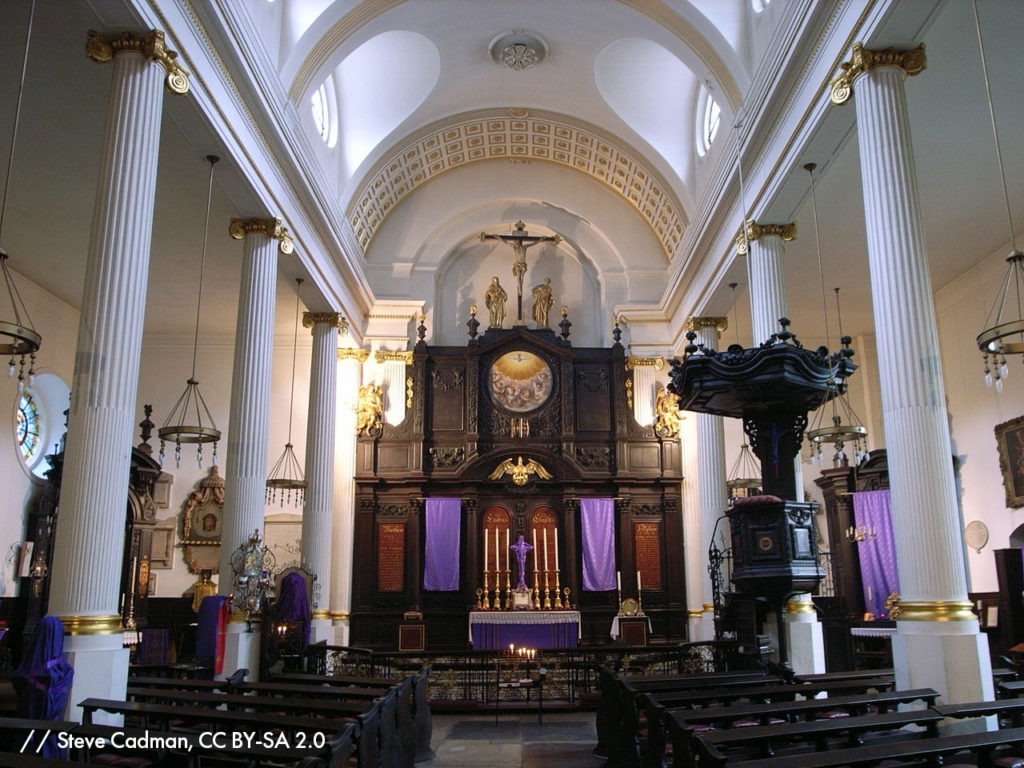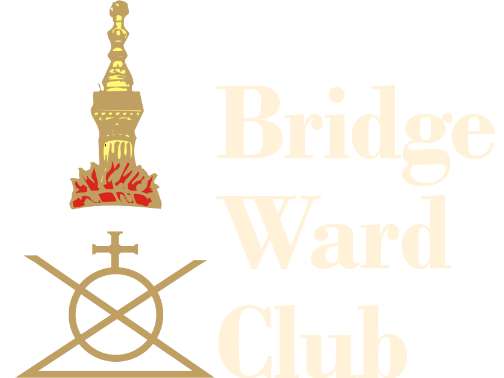About the Ward
The Ward System
The City – an area of London of approximately one square mile – was divided into Wards in Norman times for administration purposes. The system still exists today: throughout the City meetings or Wardmotes are held on the third Wednesday each March. and every fourth year the Wardmote is charged by Precept from the Lord Mayor to elect good citizens from the community to represent the Ward for the ensuing four years.
Those elected are designated Common Councilmen and Aldermen, who make up the Court of Common Council. This Court, the head of which is the Lord Mayor, can be traced back to Saxon times and forms the governing body of the City which normally meets at the Guildhall on the second Thursday of each month to conduct the everyday business of the City under their control.
There is also a Court of Aldermen over which the Lord Mayor (also an Alderman) also presides and that Court is responsible for matters relating to the Livery Companies in the City amongst other things. Each year the Liverymen of the City elect two of the Aldermen, of whom one will be selected by the Court of Aldermen to be Lord Mayor each year.
In mediæval times Beadles were also elected to be responsible for community service, but today they attend upon the Aldermen during ceremonial occasions and also wait upon the Master and Court of Livery Companies. The Livery Companies have their roots in guilds that were formed for each craft or profession.
Bridge Ward Club Events
The Ward of Bridge and Bridge Without
‘Bridge Ward’ is but one of the 25 Wards which make up the City of London. It is not one of the larger Wards but it is represented by an Alderman and two Common Councilmen who are assisted by a Ward Clerk.
The Ward extends from the junction of Gracechurch Street and Fenchurch Street down to London Bridge and across to the south shore line of the Thames at Southwark, a distance of about 3/8th of a mile.
For hundreds of years the Ward of Bridge and Bridge Without, to give the Ward its correct title, has been historically sited, straddling the Northern approach to London Bridge which was the only gateway to the City from the south side of the River Thames. This led to Bridge Street, also named Fish Street, now known as Fish Street Hill, a narrow cobbled hill leading from the north foot of the Bridge to Gracechurch Street in the heart of the City.
The east side of the Ward extends to the lower end of Monument Street and to Swan Lane in the west, with the imposing and elegant Fishmongers’ Hall adjacent to London Bridge. Almost opposite the Hall is St Magnus the Martyr, the parish and ward church.
The Ward’s position brought about much prosperity due to the business that was transacted in this small area of the City. Today many changes have taken place but it is just as busy, possibly more so, since the arrival of new commercial and financial premises and buildings which have completely altered the old character of the Ward of Bridge.
The Ward of Bridge Without
By the 14th century the City Ward boundaries had been determined and bars had been placed across the main streets leading from the City indicating its outer limits. In the middle of the 16th century the City authorities were increasingly concerned about fugitives escaping from justice by crossing southwards from London Bridge to Southwark which caused them to petition Edward VI to sell them the Borough of Southwark, which he did in 1550. This new area of the City became known as the Ward of Bridge Without. In 1899 an Act of Parliament separated Southwark from the City and in 1978 the Ward was amalgamated with Bridge Ward.
Get In Touch
London Bridge
Bridge Ward takes its name from London Bridge the first of which was made of wood by the Romans sometime between 100 and 400 AD. A number of other wooden bridges were erected but they all came to some misfortune.
In 1176 the first stone bridge was built by Peter de Colechurch, a priest at St Mary Colechurch in Cheapside. This bridge, which was over 900 ft long, 40 ft high but only 20 ft wide, had 19 irregular shaped arches and a drawbridge and took 33 years to build. This bridge stood for 656 years. Unfortunately soon after the bridge was finished, stalls, shops and houses were erected on each side of the bridge so that by 1358 there were 138 shops and houses on it. This reduced the roadway considerably and eventually because of the congestion caused they were removed between 1758 and 1762.
One of the buildings erected on the bridge was a chapel which stood on the 9th pier from the City dedicated to St Thomas a Becket but by the late 14th century it was rebuilt by Henry Yevele, the King’s Mason. The bridge also had a gatehouse to protect the drawbridge close to the Southwark shore and a stone gate at the Southwark end which was the formal entrance into the City.
During its life this old Bridge witnessed many historical pageants when kings and queens, mobs and rebels used the bridge. As it was the only entry into the City from the south for many centuries it was always full of pilgrims, monks, merchants, armies and travellers from the highest to the low.
In the early 19th century another London Bridge had to be built and John Rennie’s bridge was opened in 1831 just up river from the old bridge, but after only 80 years one of the piers began to settle in the Thames. This bridge was the one that was eventually sold to Americans in 1968 for £1,000,000 and was re-erected in Lake Havasu City, Arizona in 1972, where it still stands.
The present bridge which is 107 ft wide (more than five times the width of the bridge built in 1176) was opened in 1973.
For more information about London Bridge and its history go to www.oldlondonbridge.com.
The Monument
To commemorate the Great Fire of 1666, Sir Christopher Wren was commissioned by Charles II to build the Monument, which he did between 1671 and 1677. It is a Doric column of Portland stone, rising to a height of 202 feet, topped by a flaming urn which symbolises the fire.
One can reach the balcony by climbing 311 steps within the column for a magnificent view over the Ward, the City and the river.
The base is decorated with an allegorical figure, showing Charles II with his brother comforting a seated figure representing the City, surrounded by devastation.
The Monument is the tallest single standing column in the world.


The Church of St Magnus the Martyr
The Church was founded in the 3rd century and was first mentioned in the Westminster Domesday chartulary in 1067. By the 15th century the fabric of the building was in a dreadful state and priests were spending too much time fishing in the Thames and frequenting the taverns.
The patronage of St Magnus was held between the two Abbeys of Westminster and Bermondsey until the Dissolution of the churches and monasteries in 1538 by Henry VIII. In 1553 Queen Mary granted the living of the church jointly to the Bishop of London and the Archbishop of Canterbury.
In 1623 the ageing fabric was repaired and then in 1666 the church was completely destroyed by the Great Fire. The present structure was built on the foundations of the old church and designed and built by Sir Christopher Wren between 1671 and 1687 at a cost of £9,576. The design of the tower which was added in 1703 is said to have been inspired by St Charles Borrego Church in Antwerp. The spire is one of Wren’s finest, as he considered that St Magnus was in such a prime position, being the first church to be encountered on approaching the City from across the bridge.
In 1759 the widening of the old London Bridge was being undertaken and it was necessary to remove the vestries at the west end of St Magnus. An archway was formed beneath the tower in order that the east footway of the bridge could pass under it.
By 1782 the noise of Billingsgate Market was becoming unbearable during the services inside the church, so that the long north windows facing Lower Thames Street were filled in, leaving circular ones higher up in their place.
St Magnus is well worth a visit, and a visitor will find it to be light and spacious, having a nave and two aisles separated by fluted ionic columns, supporting an entablature, which carries a vaulted ceiling. The whole interior is enriched by white and gold decor and the dark stained woodwork of the reredos, pews, vestibule and gallery housing the organ, contrasts sharply with the bright background.
The reredos, surmounted by the Rood, is of exceptional merit. High up in the centre is a circular panel bearing a painting of the dove of peace, supported by angels, and beneath is a pelican with wings outstretched, which according to legend feeds its young with its own blood by plucking at its own breast. This symbolises Christ giving his life for us in the Holy Sacrament at the altar. Below, on either side, are the painted figures of Moses and his brother Aaron.
The altar rails date from 1683 and are choice examples of Sussex wrought ironwork from those days. In the south aisle stands the font, which is dated from the same year. The pulpit has fine wrought iron balustrades to the steps and the first swell box organ, invented by Jordan in 1716, was donated to the Church by Sir Charles Duncombe. When Sir Charles was an apprentice in his youth he was late for work one day and was subsequently chastised by his employer. He vowed that should he ever become well known and wealthy he would place a clock on St Magnus Church so that other apprentices would not suffer the same fate and this he did in 1709, on becoming Lord Mayor.
Three Lord Mayors and other City dignitaries are buried in the Church, and also the famous Henry Yevele, the King’s Mason and Miles Coverdale, author of the first English version of The Bible.

